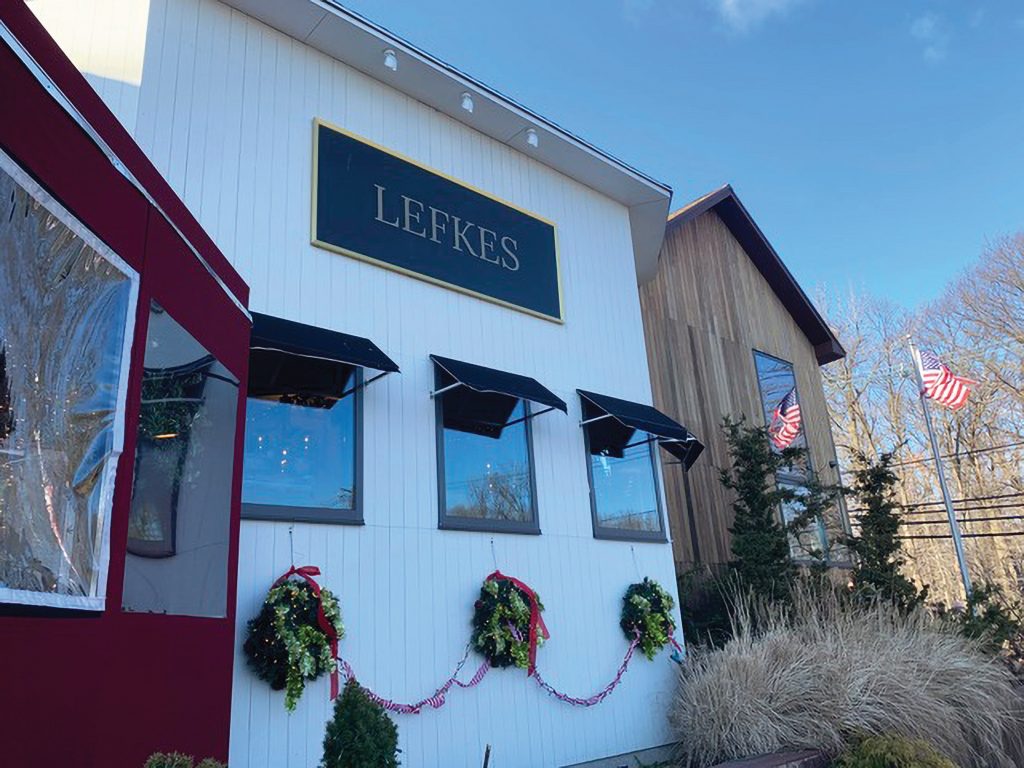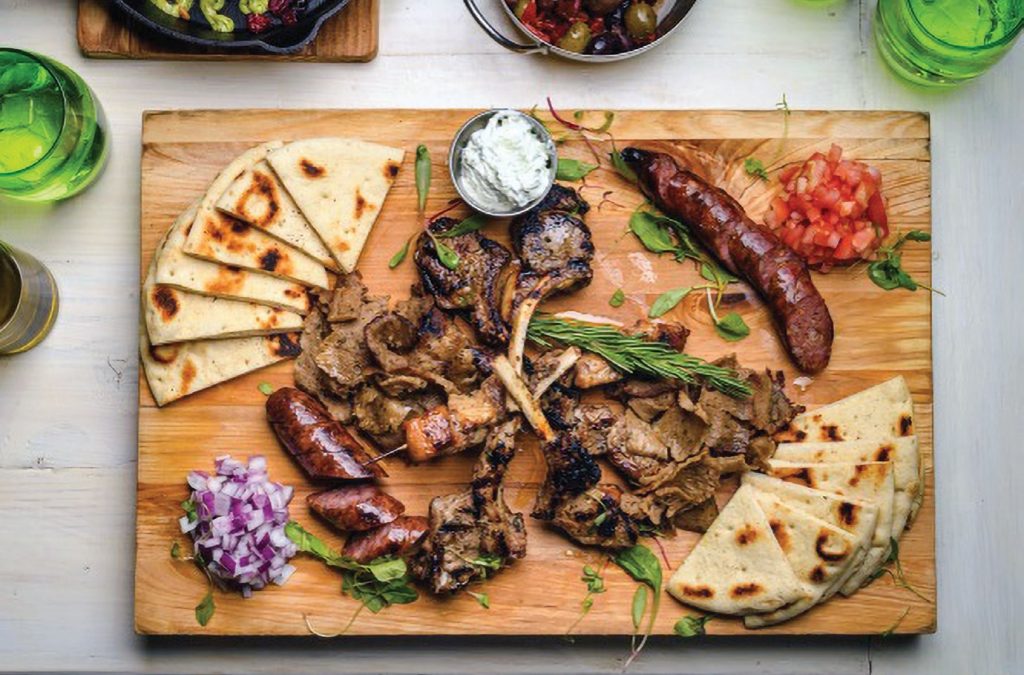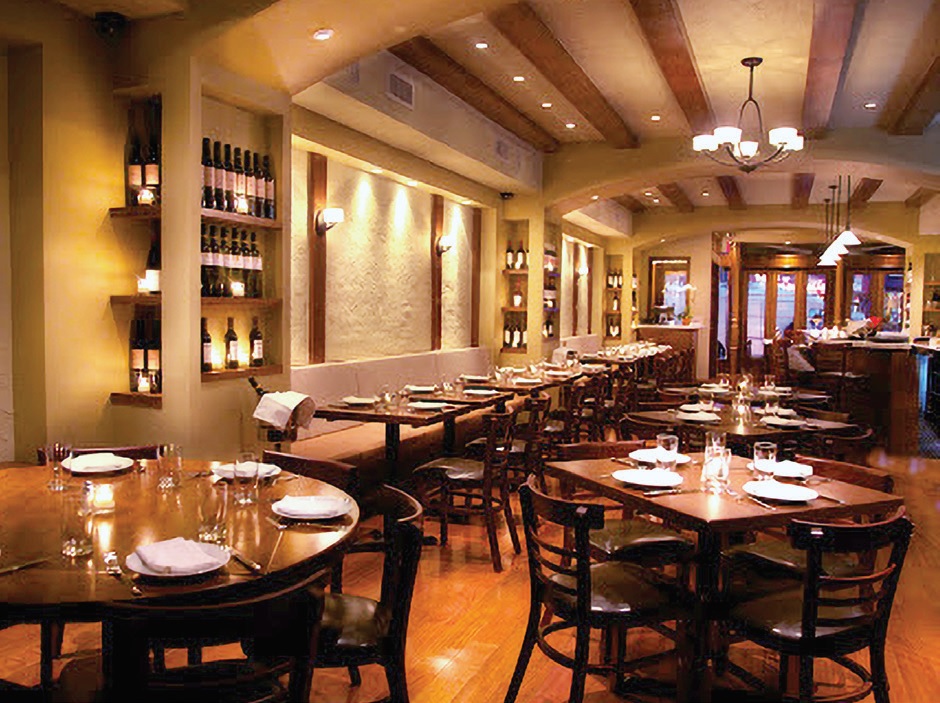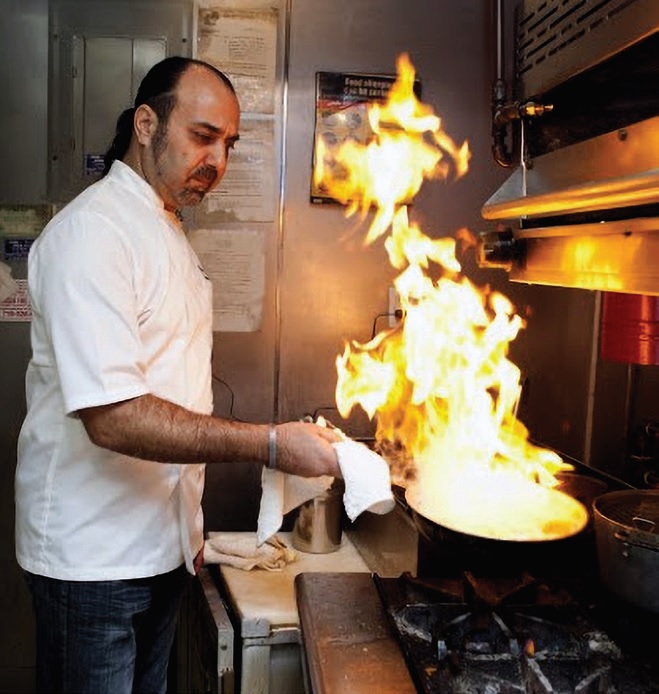Over the River and Through the Woods
Posted by estiator at 11 February, at 07 : 44 AM Print
As city dwellers reconsider their urban lifestyles, what does that mean for restaurateurs?
By Robert Balzi

Americans have adapted to the pandemic in hundreds of ways: from how they work and learn to how they spend their leisure time and how they worship. Within the restaurant industry, we’ve responded to the changes in eating habits by ramping up our takeout and delivery services. But beyond responding to the changes in the way people consume their restaurant meals, the industry is also beginning to take notice of the movement of people in response to the pandemic—especially the movement away from crowded urban areas— and its implications for the foodservice industry.
According to a Harris Survey done in August 2020, over 25% of urban dwellers were considering or planning a move out of the country’s greatest population centers. Anecdotal evidence suggests that by August, a significant number of city slickers had already traded their apartments in places like New York City for homes in upstate New York, Connecticut, and New Jersey. As a result, inventories of homes for sale in those places are at the lowest in a decade.
Nikos Koulouris, a real estate agent working in the affluent Fairfield County market in southwestern Connecticut, says homes there have been selling within hours of being listed, with bidding wars driving sale prices well over their initial asking prices. “Schools have seen an uptick in registrations as a result, while many businesses associated with home improvements have had banner years,” he says, suggesting the boom in that industry is a result of city transplants fixing up their newly acquired properties.
You don’t need a study to explain the reasons for the movement: Densely populated cities are petri dishes for germs, plus the unrest that broke out last year in response to the police killing of George Floyd has driven concern for some that city streets are unsafe. So, what, then, has the movement away from urban centers meant for restaurants? Estiator spoke with three restaurant owners who have been impacted.
Greca Mediterranean Kitchen + Bar is located approximately 75 miles north of Manhattan in Connecticut’s Litchfield County. Opened four months before the COVID crisis, the restaurant was able to generate enough interest to be voted at the top of four categories in Connecticut Magazine’s Best Restaurants list of 2021, including Best Restaurant (Overall Excellence), Best New Restaurant and Best Mediterranean/ Greek Restaurant. Owner and Estiator contributor Constantine Kolitsas attributes much of his restaurant’s success to the arrival of New Yorkers to the area.
“While many of the longtime residents have had some experience with Greek food, the New Yorkers who have either recently moved into the area or made year-long residences of their weekend and summer homes have flocked to the restaurant because they have a deep appreciation for upscale Greek cuisine,” he says. “And if the recent uptick in COVID cases has kept many from dining in, they continue to order takeout and delivery of the foods they love.” This includes, he says, grilled whole bronzino, a menu item he originally thought would not move for takeout.
The exodus of people from the New York City boroughs has impacted his business in several ways, he indicates. “Our price-per-person average has gone up considerably as the majority of the New Yorkers moving in are in a very high income bracket and are accustomed to spending city prices for great meals,” he says. And his product mix report shows that the “Greekest” portion of his menu is selling more than ever.
“Because we are in a location where Greek food was something exotic to many people, our menu includes several dishes from other cultures around the Mediterranean,” says Kolitsas. Billing his eatery as a Mediterranean restaurant “with the accent on the Greek,” he has continued to add traditional and modern Greek menu items since the pandemic began, first as specials and then as permanent additions. This, he says, is in response to demand that is largely from the city transplants.
“People living in large urban centers are exposed to a broader range of cuisines,” he says, enabling many to develop very sophisticated palates as well as a deeper understanding of food culture. “Because our menu is unlike any other in the region, it attracts those food afficionados.”
Among the individuals it attracted was a food writer for Litchfield Magazine, a weekend bible for the New Yorkers weekending in the tony Litchfield Hills. A Manhattanite who has also written a couple of novels, he wrote a glowing review of the restaurant in the magazine’s November issue, which, Kolitsas says, brought in a daily stream of new customers, nearly all New Yorkers. The result was an infusion of new regular customers at a time when other restaurants were slowing down as outdoor dining became untenable.
Lefkes Estiatorio is located across the George Washington Bridge from Manhattan, in the affluent New Jersey township of Englewood Cliffs. According to the real estate website Zillow, the average home there is valued at nearly $1.2 million, with prices expected to rise over 8% in the coming 12 months. Unlike Litchfield County in Connecticut, the traditional residency of New Yorkers in Englewood Cliffs is not weekend-related, but, instead, consists of full-time permanent residents. Just 20 minutes from midtown Manhattan, the township is a bedroom community for hedge fund managers and corporate leaders who (before the pandemic) commuted across the Hudson on a daily basis.
“With people working remotely, the number of people who stay in town during the day has swelled significantly,” says Georgia Dumas, who took sole ownership of the restaurant after buying out her partners last year. The timing couldn’t have been better. As a minority owner, she had left daily management of the restaurant to her partners. While the restaurant was very good, it was inconsistent, which had a negative impact on business. With the partners gone, she hired a new chef, focused the entire staff on quality and service, and turned Lefkes into a COVID-proof juggernaut. A beautiful enclosed outdoor patio space is as elegant and inviting as the restaurant’s stunning interior, and attracts the city’s movers and shakers in droves.
“We’ve turned Lefkes into the ‘place to be,’” says Dumas, whose golden touch was behind the successful renaissance of Manhattan’s ‘Cesca, located next to the Beacon Theater on Manhattan’s West Side.
Michael Goras, an insurance executive who serves a significant number of restaurant customers in New Jersey and throughout the tri-state area, lives in nearby Oakland and was lunching at Lefkes when we visited to speak with Ms. Dumas.
“People are not comfortable going into the city these days, particularly in midtown Manattan,” he says. “I have friends who are going into the city to work and are simply depressed by what they see. When I ask them to meet for dinner, they almost always choose restaurants outside the city.
“Many people have grown tired with the pandemic,” adds Dumas. “They want to go out, respecting social distancing protocols and being careful, but they want to go out just the same. They are tired of being stuck in the house.”
Yefsi Estiatorio has been a mainstay of the Upper East Side for nearly nine years. Under Michelin star chef/ owner Christos Christou, the restaurant has become a Mecca for Greek food connoisseurs up and down the East Coast. Where some of the city’s other marquee names in Greek cuisine have suffered severely since the onset of the pandemic (Midtown’s Kellari has been shuttered since March, and rumors have been circulating that the temporary closing of Ethos on 1st and 53rd may be permanent), Christou and Yefsi have been forging ahead, served well by the intransigence on the part of the residents of the restaurant’s neighborhood.
Asked whether the neighborhood has thinned out in the manner of many others in the city and in the boroughs, he says he’s seen little evidence of a large migration out of the Upper East Side.
“People feel safe here,” he says, indicating that with the exception of a slight increase in the area’s homeless population, the neighborhood has not deteriorated.
“Because we are located in an affluent neighborhood that is largely residential, we haven’t experienced many of the extreme consequences related to the pandemic,” says Christou. While the dining room has been impacted, he says, many people in the neighborhood have turned to the takeout and delivery services he offers from his restaurant. To facilitate the delivery aspect, he has turned to a third-party service. Thanks to awareness raised by the industry and groups such as the Koutsoudakis and Iakovou law firms, third-party delivery services have trimmed fees paid by restaurants from upwards of 30% to a more manageable 15% or less.
And where many dining rooms have been completely shuttered, Christou continues to see a steady stream of regular customers dining inside or in the outdoor seating area he has constructed.
“We are still here, doing everything we can to keep life just a little more normal,” he says, feeling confident that his neighborhood will remain intact as the city and the country and the world ride out what is hopefully the last wave until the benefits of the vaccine and herd immunity take hold.



















